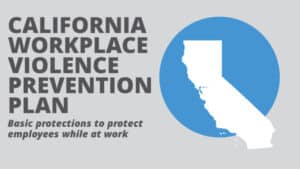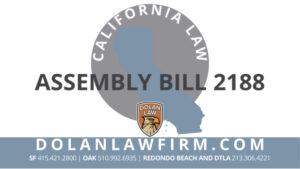Around this time every year, I write a series of articles on California’s new laws: laws which were passed through the legislature and signed by the Governor Jerry Brown last year, but did not come in to effect until Jan. 1, 2019. This week, I will focus on a bevy of new sexual harassment laws which owe their origins, in part, to the #MeToo movement. In response to the recent exposure of rampant sexual harassment in politics, the entertainment industry, and business, California has continued to demonstrate an aggressive and progressive agenda with the passage of major legislation supported by several key individual rights organizations, including the Consumer Attorneys of California and the California Employment Lawyers Association.
The first of these bills, Senate Bill 1300, sponsored by state Sen. Hanne Beth Jackson from the 19th Senate District, amended the Fair Employment and Housing Act (FEHA), the state statute already providing anti-discrimination and harassment protections for employees in the workplace. FEHA continues to hold employers, labor organizations, employment agencies, apprenticeship training programs, and other training programs leading to employment responsible for harassment of an employee or contractor by a supervisor or agent of the employer based on any protected classification, including race, sex, age, religious affiliation, disability, sexual orientation, or gender identity or expression. FEHA also continues holds employers responsible for harassment of employees based on protected classifications by any non-supervisory employee if the employer, its agents, or supervisors knew or should have known of the misconduct and failed to take immediate and appropriate corrective action.
However, up until now, FEHA has held an employer responsible for only sexual harassment, but not other forms of unlawful harassment based on other protected classifications, of employees by non-employees, again in circumstances where the employer, its agents, or supervisors knew or should have known of the conduct and failed to take immediate and appropriate corrective action. SB 1300 now extends the scope of protection from non-employee misconduct to include not only sexual harassment, but any form of unlawful harassment, i.e. based on age, race, national origin, religious affiliation, disability, sexual orientation, or gender identity or expression. The amended law further expands the pool of workers protected against non-employee harassment to interns, volunteers and contractors. An employer who fails to put a stop to such harassment that it knew of or should have known about can be sued and held liable for both financial losses and other personal harms caused to the harassed, such as anxiety, fear, and humiliation.
SB 1300 has also cracked the code of secrecy: in every case I’ve settled, whether before or after trial, in my 25 years of employment law practice, the defendant employer has demanded a “confidentiality clause” to make it a “secret settlement,” often imposing significant financial penalties for any disclosure of terms. With SB 1300 in effect, it is now illegal to condition new employment, continued employment, raises or bonuses on an employee releasing of any claim or right under FEHA, including by signing a non-disparagement agreement or other document that would deny the employee their right to disclose information about unlawful acts in the workplace.
Next, SB 224, also sponsored by state Sen. Jackson, amends the California Civil Code to expand the reach of sexual harassment claims to cover non-employment relationships. These amendments allow a plaintiff to prove a cause of action for sexual harassment against a defendant who held themself out as being able to help the plaintiff establish a business, service, or professional relationship. The class of potential defendants under SB 224 include investors, elected officials, lobbyists, directors, and producers …. can you say Harvey Weinstein?
Finally, SB 1343, introduced by state Sen. Holly Mitchell, expands anti-harassment training requirements to cover both smaller businesses and non-supervisory employees. Previously, FEHA has required employers with 50 or more employees to provide at least two hours of prescribed training and education regarding sexual harassment, abusive conduct, and harassment based upon gender to all supervisory employees within six months of their assumption of a supervisory position and then once every two years. Upon implementation of SB 134, all employers of five or more employees must now provide at least two hours of sexual harassment training to all supervisory employees, as well as at least one hour of sexual harassment training to all nonsupervisory employees, by Jan. 1, 2020 and then once every two years thereafter.










